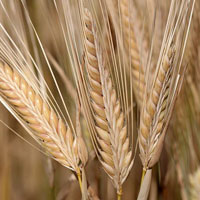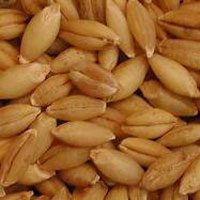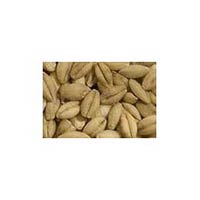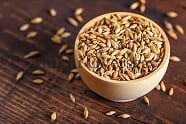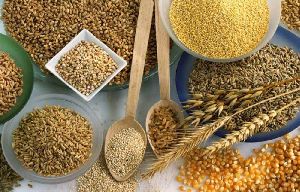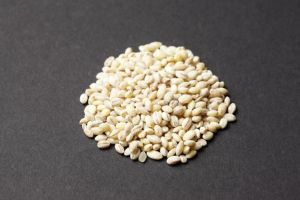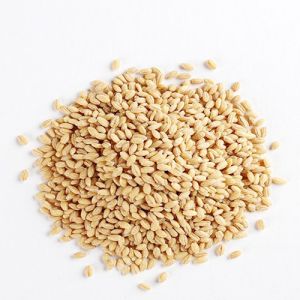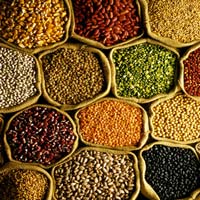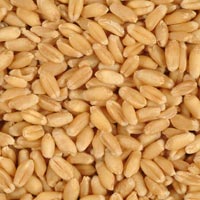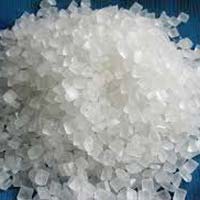Listing ID #3891168
Company Information
Ask for more detail from the seller
Contact Supplierbarley is an important rabi crop. For human consumption, it is largely consumed by the poor classes either as flour for chapati making, pure or mixed with wheat or gram flour, or as parched grains to make sattu.
in bihar and west bengal the poor as a staple food consume dehusked barley. In uttar pradesh and rajasthan, mixed flour of barley, gram and wheat is used for making `missi roti’. However, almost 60 per cent of the total barley produced in india are consumed as cattle feed. Barley is also used in the manufacture of malt and , aryuvedic medicine, cocoa-malt drinks and baby foods. With the coming up of many new breweries, after the liberalised licensing policy, the share of barley in the production of malt for manufacture of is expected to rise.
area of cultivation
the are under barley cultivation in india has been gradually going down as farmers are shifting to more remunerative crops like wheat and gram or cash crops like rapeseed, mustard or safflower. Barley is grown mainly in the northern plains of the country, but its cultivation extends up to elevations of about 4,575 metres (15,000 feet) in the himalayas. Its greatest concentration is in the states of uttar pradesh, rajasthan and bihar, which account for approximately 52, 18 and 11 per cent, respectively, of the total area. It is also grown to a considerable extent in northern madhya pradesh, haryana, punjab, west bengal, himachal pradesh and jammu and kashmir.
it is of minor importance in the south of 20on, although it can be grown successfully wherever wheat can be grown. In this region, it occupies small areas in gujarat, maharashtra, northern karnataka and in the nilgiris and the palney hills of tamil nadu. About 51 per cent of the total area under this crop receive irrigation, the remainder being grown as a rainfed crop. The crop needs less water and is more tolerant of salinity and alkali conditions than other winter cereals. It is, therefore, of great significance in areas where it is not possible to take a successful crop of wheat owing to unsuitable soil and insufficient irrigation.
season
barley requires cool weather during early growth and warm and dry weather at maturity. It grows reasonably well in temperate as in sub-tropical regions of the world. Being drought resistant, barley suits areas with scanty rainfall. Sowing of barley in india takes place during october to december.
soils
barley can be grown successfully on those soils, which are suitable for wheat cultivation. However, it thrives well on well-drained fertile deep loam soils. Severe lodging occurs when grown on extremely fertile soils. It is grown widely on a variety of soils ranging in their texture from sandy to heavy loams in the indo-gangetic plains and on terraced slopes in the hills.
its cultivation also extends, although to a limited extent, to medium black soils of rajasthan, maharashtra and karnataka. It is more tolerant to alkali and saline conditions than other rabi cereals and is grown extensively under such conditions in rajasthan, punjab, haryana, uttar pradesh and bihar. Recent experiment indicates that this crop can be grown successfully on coastal saline soils of sunderbans in west bengal and on saline-alkali black soils in the canal-irrigated areas of northern karnataka.
cultivation
banana needs 150-200 g n, 40-60 g p2o5 and 200-300 g k2o/plant/year. Full dose of p2o5 at the time of planting, 4 splits of n and k before the start of reproductive phase have been recommended. However, studies conducted at different locations have clearly indicated necessity of application of one-fourth n and one-third k2o at reproductive phase. Application of n in reproductive phase delayed the senescence of leaves and improved the bunch weight. Finger filling was better when the one-third of k2o was applied at shooting stage. In field experiments application of 25% n through compost 2 kg cake and 50% n as inorganic source recorded sustainable production. Nematode population was significantly reduced in plots receiving neem-cake. Response to zn, bo and mn sprays has been observed. To integrate the nutrient needs based on plant analysis has been attempted. Leaf nutrients ranges are worked out but there is need for its refinement for the effective utilization of the information in integrated management of soil and plant nutrition. Sodium toxicity is observed in sodic soils and there is a differential response of the cultivars
seed and sowing
barley can be grown successfully on those soils, which are suitable for wheat cultivation. However, it thrives well on well-drained fertile deep loam soils. Severe lodging occurs when grown on extremely fertile soils. It is grown widely on a variety of soils ranging in their texture from sandy to heavy loams in the indo-gangetic plains and on terraced slopes in the hills. Its cultivation also extends, although to a limited extent, to medium black soils of rajasthan, maharashtra and karnataka. It is more tolerant to alkali and saline conditions than other rabi cereals and is grown extensively under such conditions in rajasthan, punjab, haryana, uttar pradesh and bihar. Recent experiment indicates that this crop can be grown successfully on coastal saline soils of sunderbans in west bengal and on saline-alkali black soils in the canal-irrigated areas of northern karnataka.
rotation
the rotation for barley is very similar to that for wheat. No exact rotation is followed year after year. Maximum production is obtained when the land is not cropped in the immediately preceding kharif season. It is generally rotated with crops, such as bajra, maize, paddy, jowar, cotton, groundnut, smaller millets, moong and moth in different parts of the country. Double-cropping with barley is practised under assured soil moisture or irrigation facilities. On soils infested with nematodes, the rotating of barley with non-host crops e.g. Sunflower, for at least one to two years would reduce the nematode population.
at higher elevations, wherever barley is harvested by july to early august, an early-maturing crop of buck-wheat is grown as a second crop. In the kashmir valley, paddy is the main kharif crop and the fields remain fallow during rabi. Barley can be fitted well in the rotation with paddy in this region.
barley is grown pure or mixed with other rabi crops, such as wheat, gram, peas and lentil. Sometimes, rape and mustard, taramira and linseed are also grown mixed with barley. The following are common crop rotations where barley is included
water management
as it has low water requirement, barley is grown as a rainfed crop. To give good yields, barley requires 2-3 irrigation. One extra irrigation is required only on sandy soils. One or two extra irrigation will be required on sandy soils. If the supply of water is inadequate, its efficiency can be increased by a proper timing of its application at the critical stages of growth of the crop. If only one irrigation is available, its application near the tillering stage has proved very profitable. When two irrigation are available, one should be applied at the active tillering stage and the other at the flowering stage. On highly alkali-saline soils, frequent light irrigation gives better results than a fewer heavy irrigation.
fertilizer management
the rainfed barley crop is rarely manured directly. It is the preceding crop in the rotation which receives the manure. Irrigated barley is often given a basal dose of eight to ten cartloads of farmyard manure or compost. Any subsequent application of a fertilizer, however, is not practised. Recent agronomic experiments indicate that barley responds strikingly to an application of 20-40 kg of n per ha under rainfed conditions, and to 40-60 kg of n per ha under irrigated conditions, depending upon the soil, climate and variety. The application of 20 kg of n per ha to the crop under dy-land farming led to the realization of 2-6 q per ha of aditional grain and an applicatiion of 40 kg of n per ha under irrigated conditions resulted in a yield of 7-9 q per ha more than that from unfertilized plot at different locations. Good response to phosphorus up to 20 kg of n per ha has been obtained under irrigated and timely-sown conditions, but only at some locations. Hence its application needs to be governed by a soil-test value.
to maximize the efficiency of nitrogenous fertilizers, the full dose of nitrogen should be placed 8-10 cm deep in the soil at sowing time under rainfed conditions. For irrigated barley, a split application of the half dose of nitrogen plus the full dose of p2o5 at sowing time and the remaining half dose of nitrogen with the first irrigation as a top-dressing is advantageous. Excess of nitrogen affects the malting and brewing quality of grain adversely. Super phosphate, however, helps to neutralize its deleterious effects.
harvesting and threshing
harvesting of barley in jammu, punjab, haryana, rajasthan and western uttar pradesh takes place from the third week of march to the middle of april. In madhya pradesh, southern and eastern uttar pradesh, bihar and west bengal, it starts a week to ten days earlier and in maharashtra, gujarat and karnataka by about the first week of february. In the hills, where it is grown during the rabi season, the harvesting time varies from the end of april to the end of may, depending upon the altitude. The spring-sown crop is harvested from the end of july to the end of september. The plants are uprooted or cut with a sickle when fully ripe. In order to prevent the loss of grain through shattering, the crop should be harvested immediately after it ripens. It is also advisable to cut the crop in the early hours of the morning as the head becomes too dry and fragile for handling in the afternoon. The threshing in the plains is done by treading the dried produce under the feet of cattle or by stationary threshers. The grain is separated by winnowing.
all information is given in good faith but no guarantee of accuracy is made nor can we anticipate every possible application of our product nor variations in manufacturing equipment and methods. Our products are therefore sold without warranty express of implied , and on the condition that the purchaser relies on his own ability to determine the suitability of each product for a particular purpose. Statement concerning the possible use of our products are not intended as recommendations for use. No liability is accepted for infringement of any patents.


